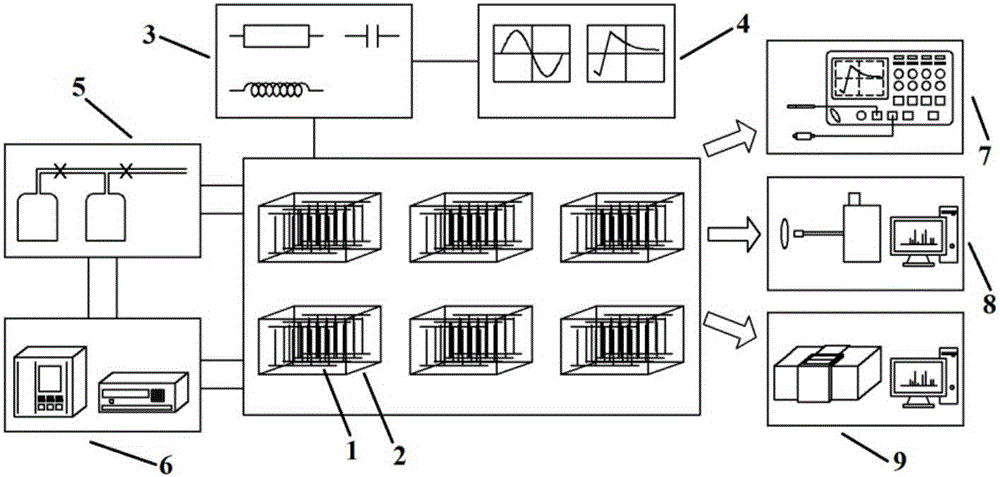Modularized device for removing NOx by synergy of large-area creeping DBD (dielectric barrier discharge) and catalyst
A catalyst and large-area technology, applied in the field of ion plasma technology, can solve the problems of difficulty in realizing large-area discharge diagnosis, high cost of raw materials, and easy failure of catalysts.
- Summary
- Abstract
- Description
- Claims
- Application Information
AI Technical Summary
Problems solved by technology
Method used
Image
Examples
Embodiment 1
[0055] The catalyst is mechanically ground into particles and sieved to ensure that its diameter is larger than the aperture 107 of the gas uniform plate and smaller than the gap between the gas uniform plate 107 and the discharge area, and then characterized; 2 In the atmosphere, the gas flow rate is 200ml / min, the gas temperature is 300°C, and the self-supporting sheet is pretreated for 30 minutes for characterization; the spectrum of the self-supporting sheet is subtracted to obtain the original catalyst spectrum S o .
[0056] Two types of discharge-stripping modules were assembled.
[0057] Connect the Class I module into the circuit and gas path, adjust the inlet gas composition, NO x 1000ppm, N 2 It is the balance gas, the gas flow rate is 200ml / min, the temperature is 300°C, and the inlet concentration of the reactant gas is measured as C o and the outlet concentration C p , and detect its photoelectric characteristics to determine the matching value.
[0058] Con...
PUM
 Login to View More
Login to View More Abstract
Description
Claims
Application Information
 Login to View More
Login to View More - R&D
- Intellectual Property
- Life Sciences
- Materials
- Tech Scout
- Unparalleled Data Quality
- Higher Quality Content
- 60% Fewer Hallucinations
Browse by: Latest US Patents, China's latest patents, Technical Efficacy Thesaurus, Application Domain, Technology Topic, Popular Technical Reports.
© 2025 PatSnap. All rights reserved.Legal|Privacy policy|Modern Slavery Act Transparency Statement|Sitemap|About US| Contact US: help@patsnap.com



